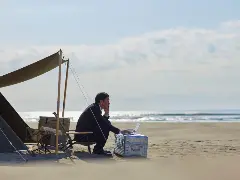

A T-bone accident can be so traumatizing: it happens when the front part of a vehicle strikes the side of another, forming a t-shape. This results in property damage and severe injuries due to the vulnerable side areas of the car.
In addition, finding out who is at fault can seem like solving a puzzle, but it's doable. You must understand what leads to these accidents and the rules determining who's accountable.
Also, assessing several factors after a T-bone car accident is essential to determining liability and obtaining help in legal proceedings and insurance claims. Keep reading this article to learn more about how to determine liability when a T-bone accident occurs.
The Following is a Guide on How to Determine Liability in a T-Bone Accident:
- Establishing the Fault: Faults in accidents usually happen when a driver is not careful enough. For instance, running a red light, not giving way at an intersection, or making an improper turn are typical examples of being careless and causing a T-bone accident.
- The Regulations and Traffic Laws: Traffic laws and rules are crucial in deciding who is to blame in a T-bone accident. For example, if a driver ignores a red light and crashes into another vehicle that's rightfully crossing the intersection, the one who ran the red light is usually held responsible. Also, making an unlawful turn or not giving way can make someone liable for the accident.
- Collecting Evidence and Witness Testimony: It's essential to gather evidence and observations from people who saw the crash. Evidence like skid marks, traffic camera recordings, and vehicle damage can give us a good understanding of what happened before a T-bone accident. Those who witnessed the collision might have important information about what each driver did, which can help determine and prove who's at fault.
- Impact Analysis and Vehicle Damage: Analyzing car damage in a T-bone accident can help determine who is responsible. The extent and position of the damage can show where the cars collided and how they were going. This kind of information can support or challenge what the drivers say happened.
- Comparative Negligence: Both drivers could be considered responsible for a T-bone accident in certain situations. Places that adhere to comparative fault laws look at each driver's level of responsibility and decide damages accordingly. If they do an assessment and one driver is found to be 80% at fault and the other 20%, the first driver might have to cover 80% of the damages.
- Insurance Claims and Legal Recourse: Once it's clear who is at fault, those injured can take legal action to get compensation. This action usually means contacting the person at fault's insurance company. The amount they might get depends on their injuries and damages. It could help with medical records and bills, compensate for lost income, ease pain, and even cover fixing or replacing their vehicle.
- Seeking Legal Representation from a Qualified Attorney: If you are involved in a tricky T-bone crash and it's unclear who is to blame, contacting a skilled lawyer for assistance is a good idea. A seasoned personal injury attorney can investigate the accident, collect evidence, talk to insurance companies, and, if necessary, advocate for your rights in court.
- Prevention of T-bone Accidents: After a T-bone crash, it's essential to figure out who is at fault, but it's even more important to stop these accidents from happening at all. To do that, drivers need to observe and follow traffic rules, stay alert at intersections, give way when needed, and stay focused on the road without allowing any distractions.
Summing Up!
In conclusion, establishing liability in a T-bone accident requires careful consideration of factors such as negligence, adherence to traffic laws, available evidence, and the degree of fault involved. After understanding these elements and seeking legal counsel, when necessary, individuals injured in such incidents can pursue fair compensation for their losses while promoting a safer driving culture to prevent future accidents.








Comments
Post a Comment